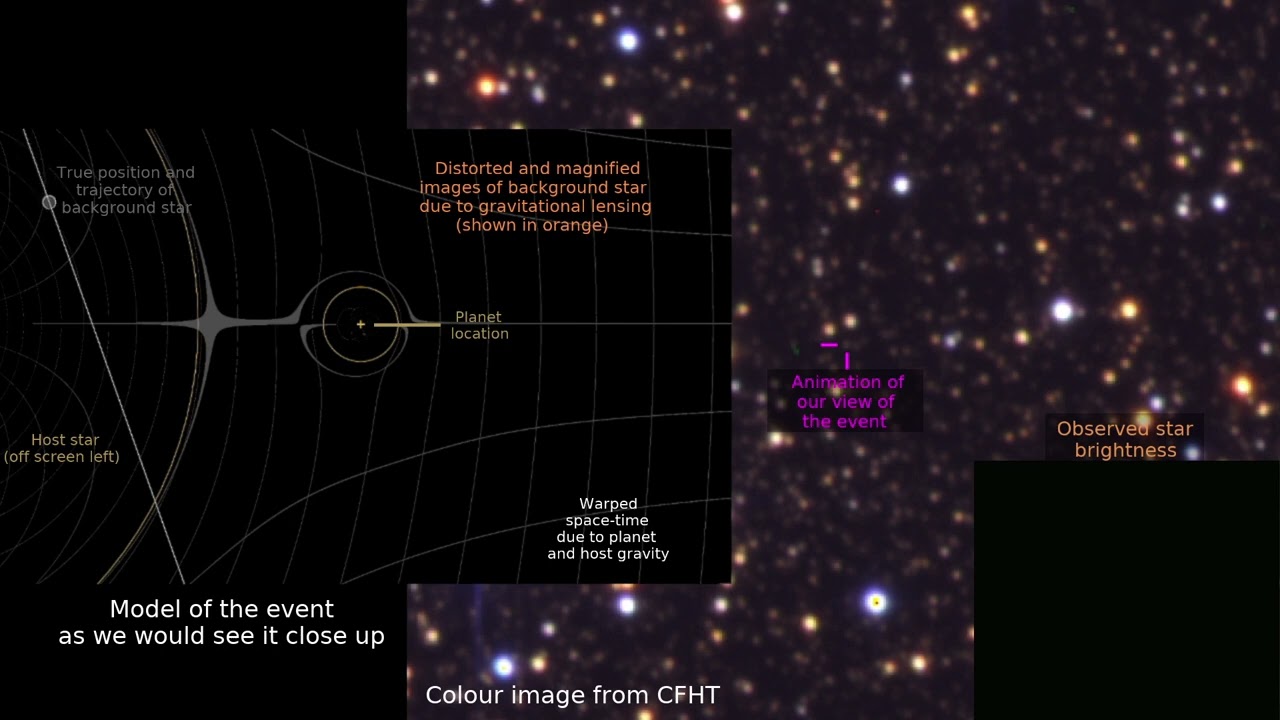The Kepler spacecraft was launched in 2009 to discover planets orbiting other stars (“exoplanets”) by observing the tiny dips in the intensity of starlight when the planets passed in front (“transited”) their stars. Kepler was able to simultaneously “stare” at a field of 150,000 stars watching for rare transit events, and prior to its retirement in 2018 due to multiple failures of on-board equipment, discovered a total of 2662 exoplanets.
Now, by analysing data archived from the Kepler mission, a group of researchers report discovery of an additional planet from the Kepler database, a near-twin of Jupiter, at a distance of 17,000 light years, twice as far as any previous Kepler discovery. The planet was discovered not by a transit, but rather its bending and magnifying the light of a background star as it passed nearby in the sky, an effect called “microlensing” predicted by general relativity. Here is a simulation of the observation from 2016.
The research paper is “Kepler K2 Campaign 9: II. First space-based discovery of an exoplanet using microlensing” with abstract:
We report on the discovery of a bound exoplanetary microlensing event from a blind search of data gathered from Campaign 9 of the Kepler K2 mission (K2C9). K2-2016-BLG-0005Lb is a densely sampled, binary caustic-crossing microlensing event with caustic entry and exit points that are resolved in the K2C9 data, enabling the lens-source relative proper motion to be measured. We have fitted a binary microlens model to the K2 dataset, and to simultaneous observations from the Optical Gravitational Lensing Experiment (OGLE-IV), Canada-France-Hawaii Telescope (CFHT), Microlensing Observations in Astrophysics (MOA-2), the Korean Microlensing Telescope Network (KMTNet), and the United Kingdom InfraRed Telescope (UKIRT). Whilst the ground-based data only sparsely sample the binary caustic, they provide a clear detection of parallax that allows us to break completely the microlensing mass-position-velocity degeneracy and measure the planet’s mass directly. We find a host mass of 0.58\pm 0.03 M_⊙ and a planetary mass of 1.1\pm 0.1 M_J. The system lies at a distance of 5.2±0.2 kpc from Earth towards the Galactic bulge. The projected physical separation of the planet from its host is found to be 4.2±0.3 au which, for circular orbits, corresponds to a=4.4^{+1.9}_{−0.4} au and period P=13^{+9}_{−2} yr, making K2-2016-BLG-0005Lb a close Jupiter analogue. Though previous exoplanet microlensing events have included space-based data, this event is the first bound microlensing exoplanet to be discovered from space-based data. Even through a space telescope not designed for microlensing studies, this result highlights the advantages for exoplanet microlensing discovery that come from continuous, high-cadence temporal sampling that is possible from space.
Here is a popular description of the discovery, “NASA’s Kepler telescope delivers new planetary discovery from the grave”.
